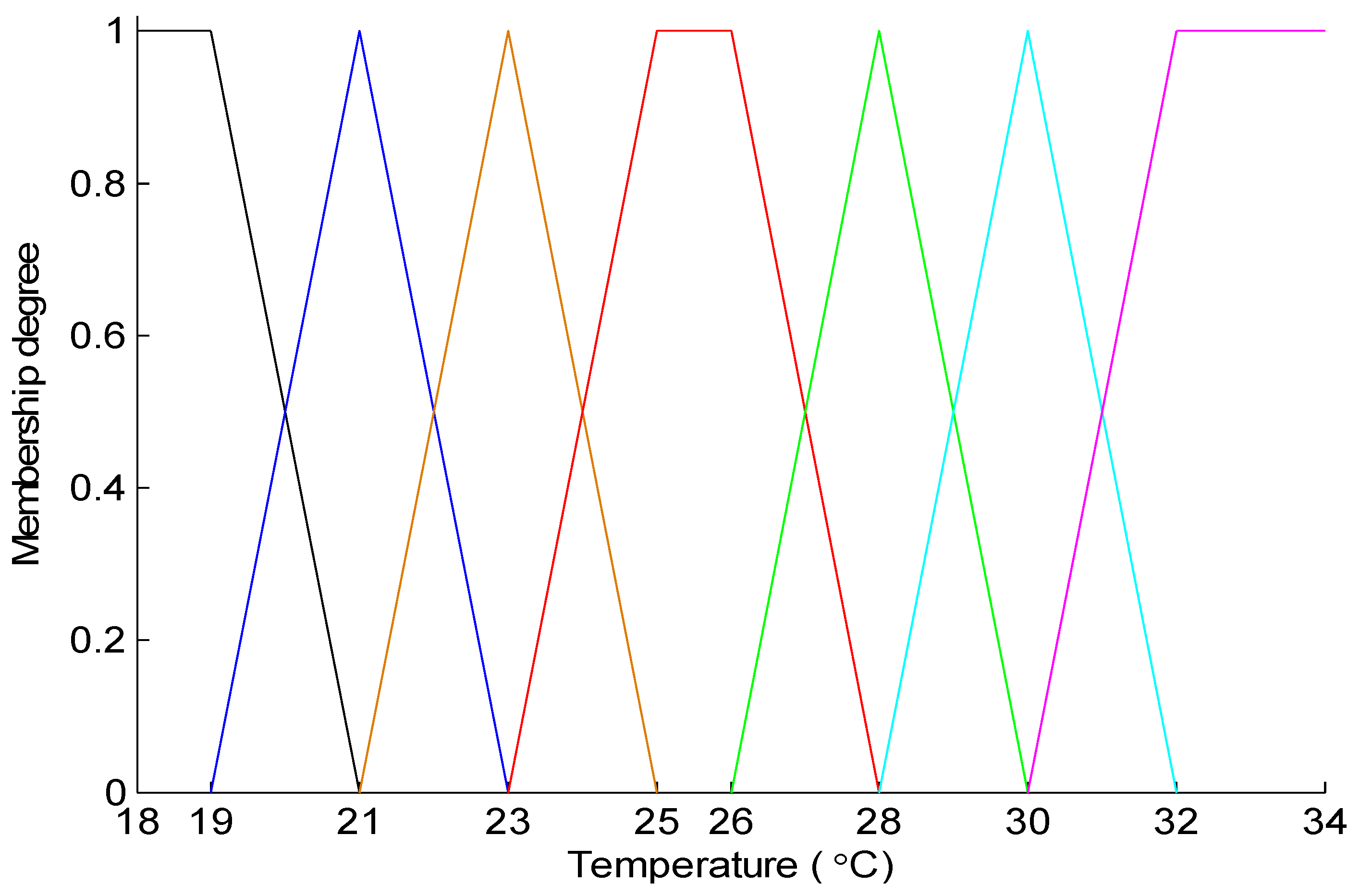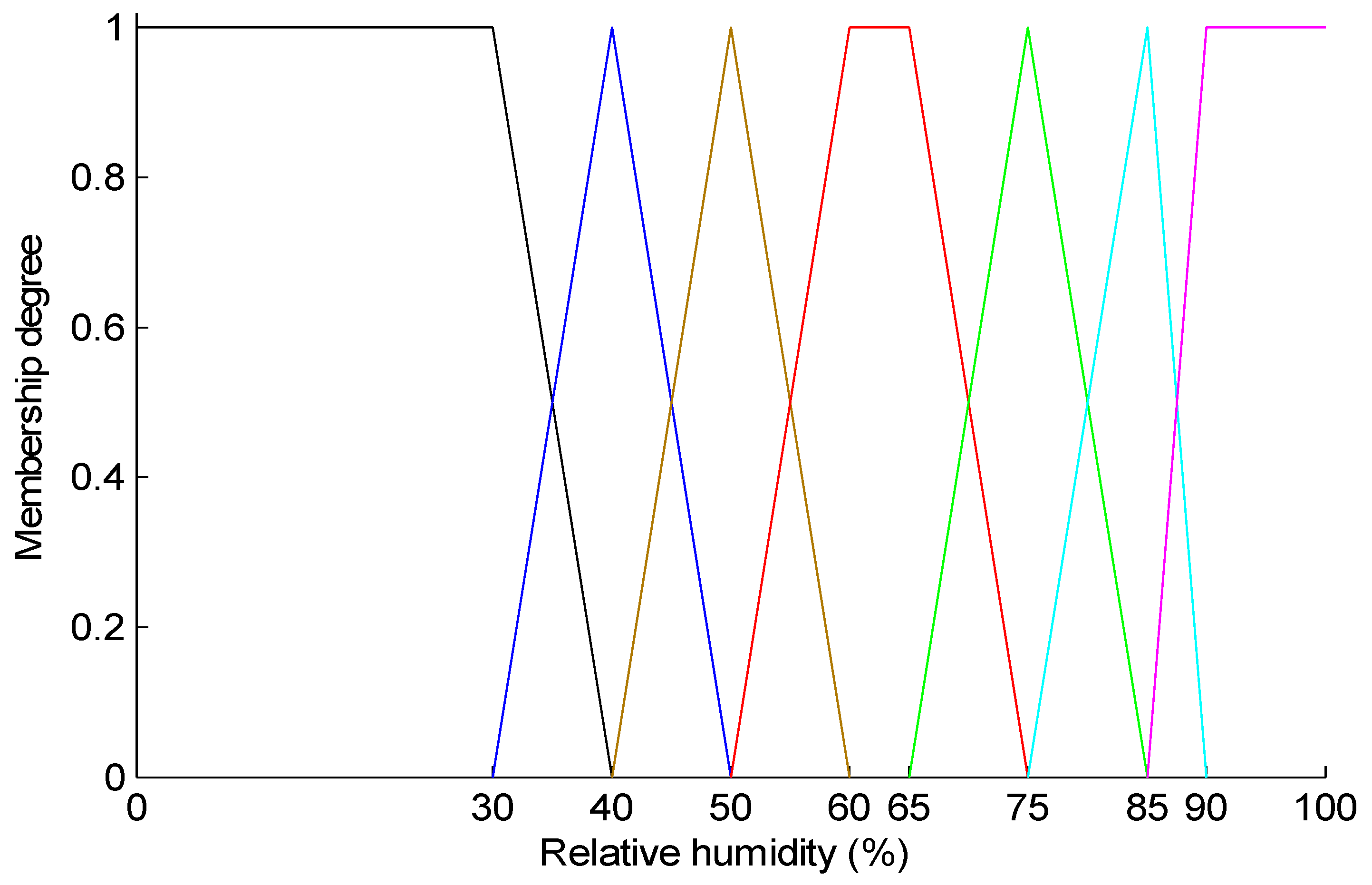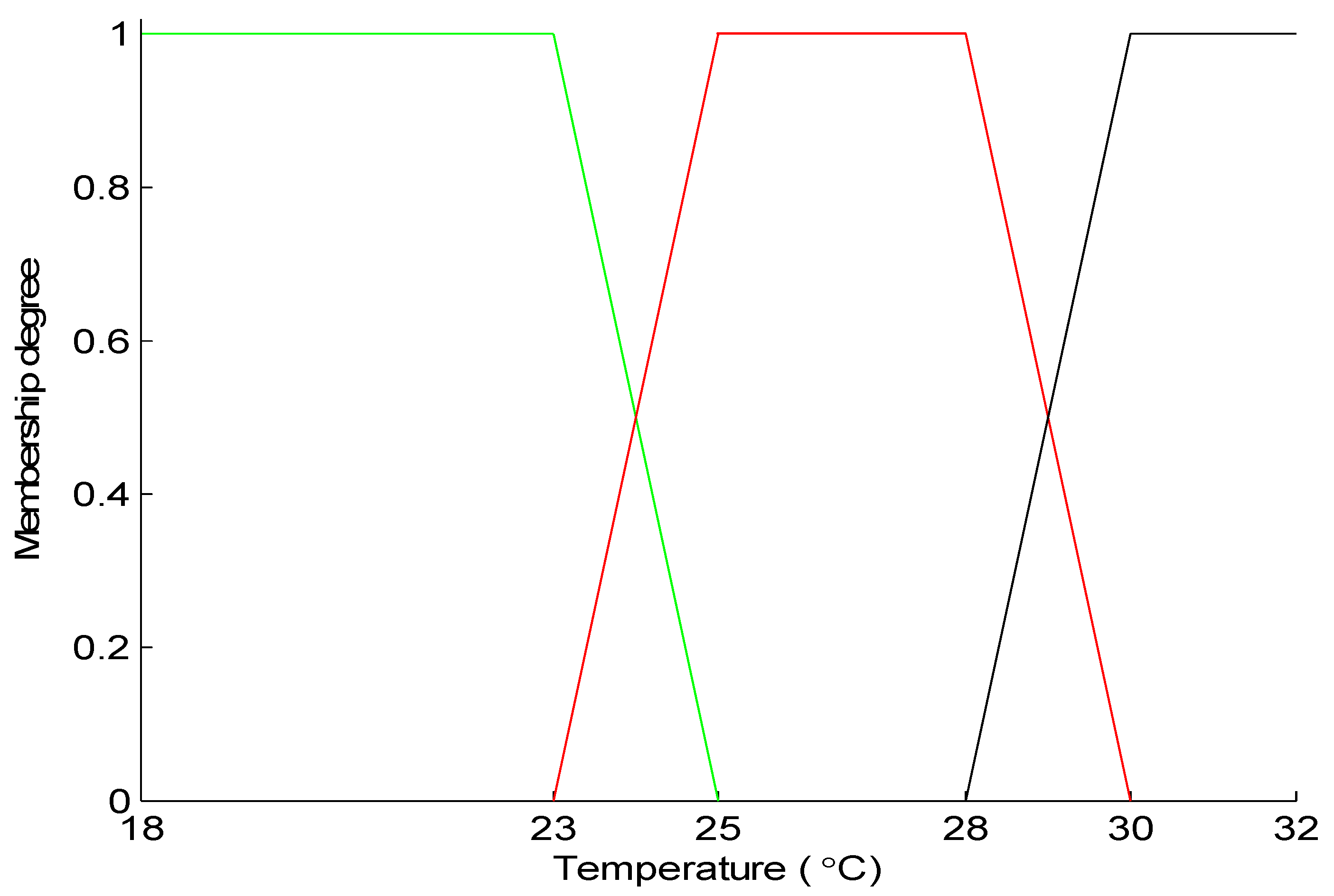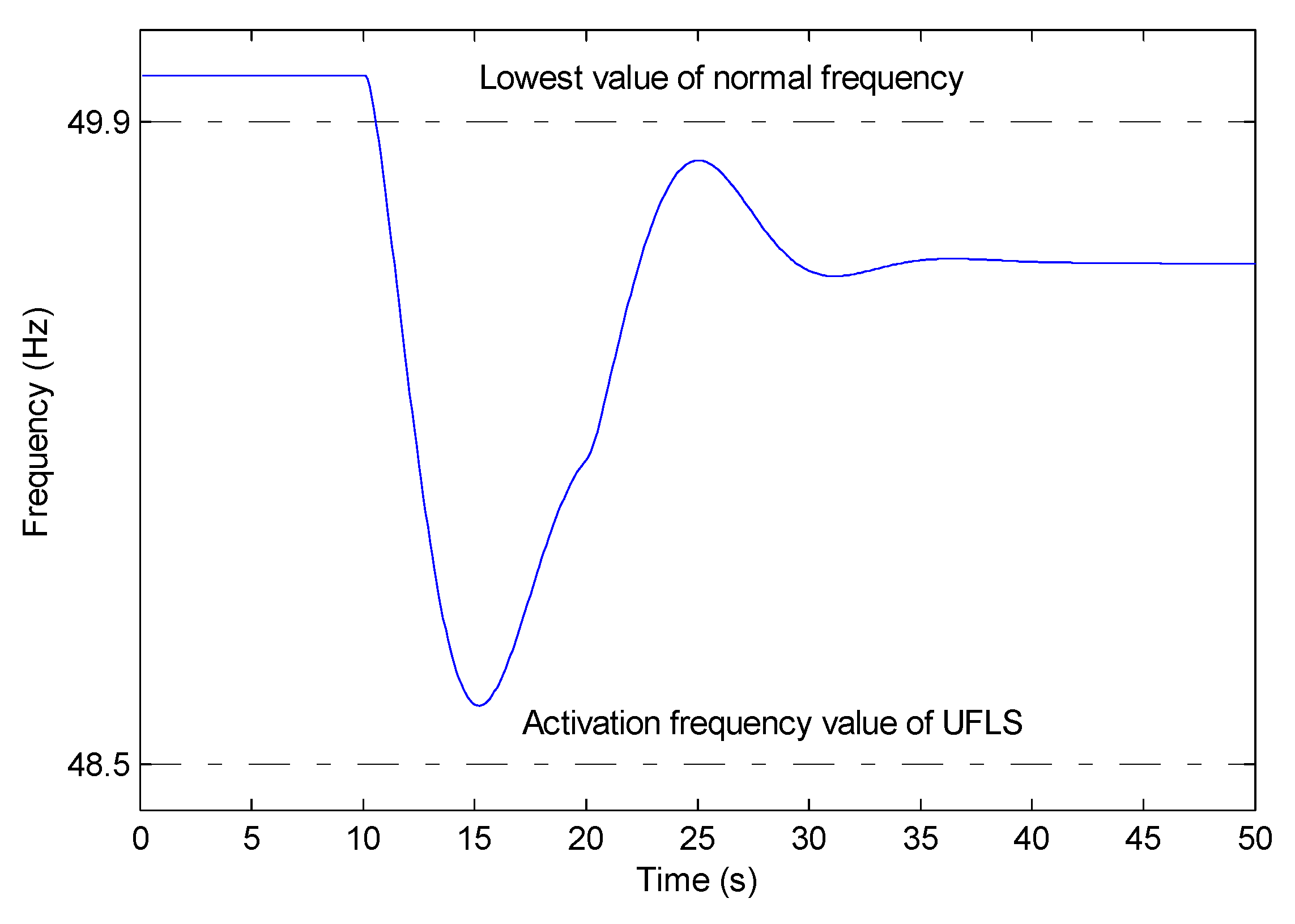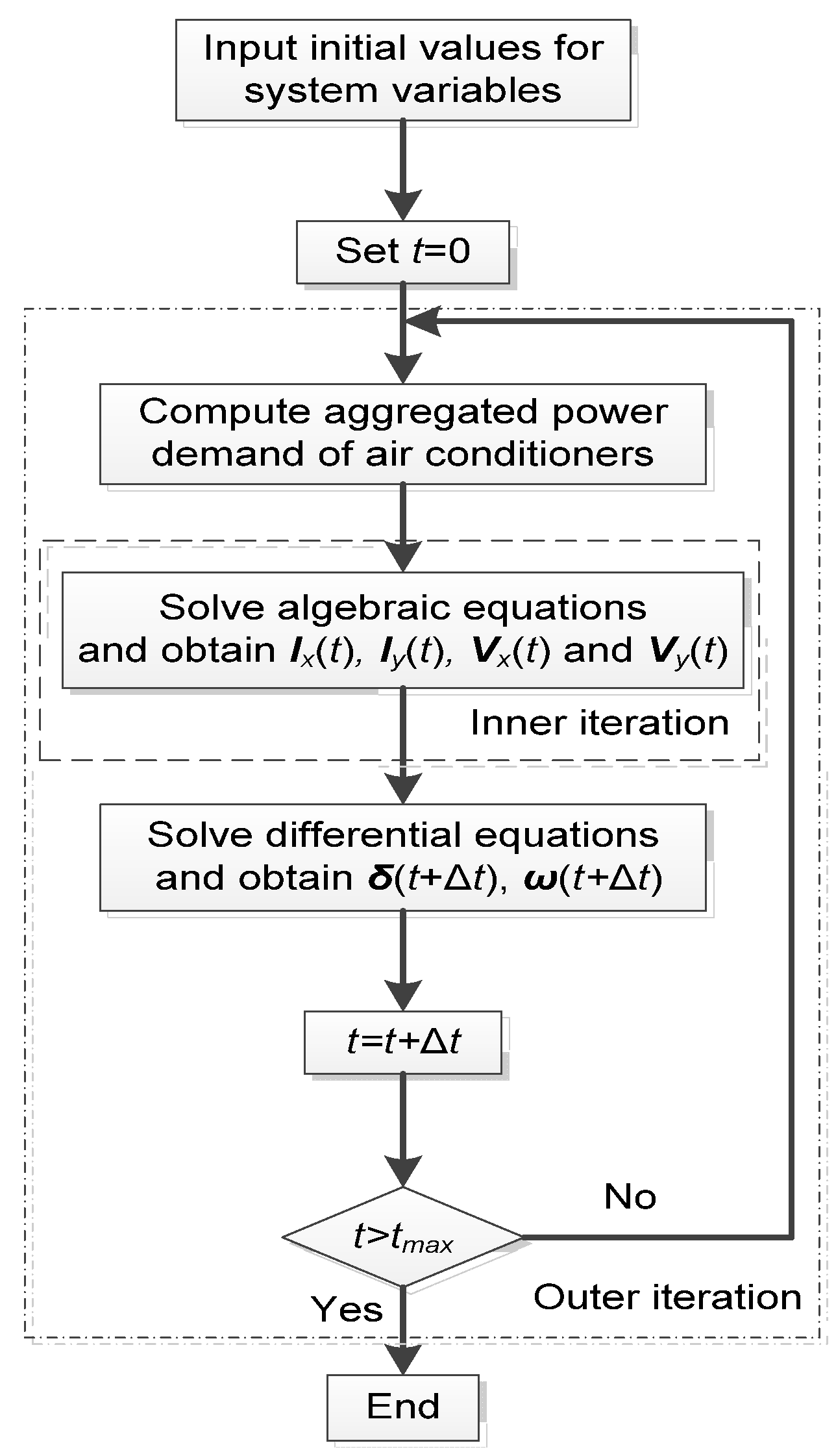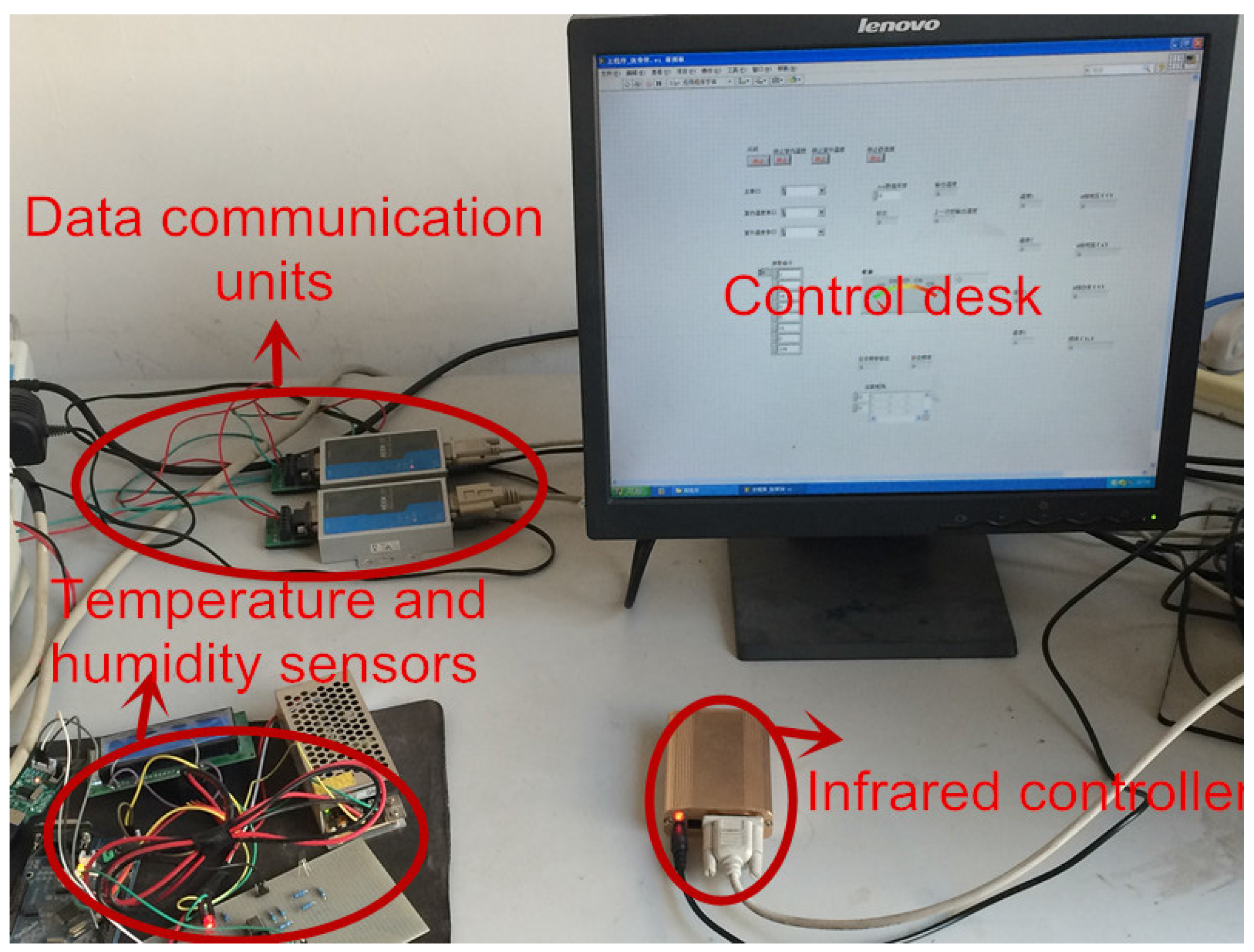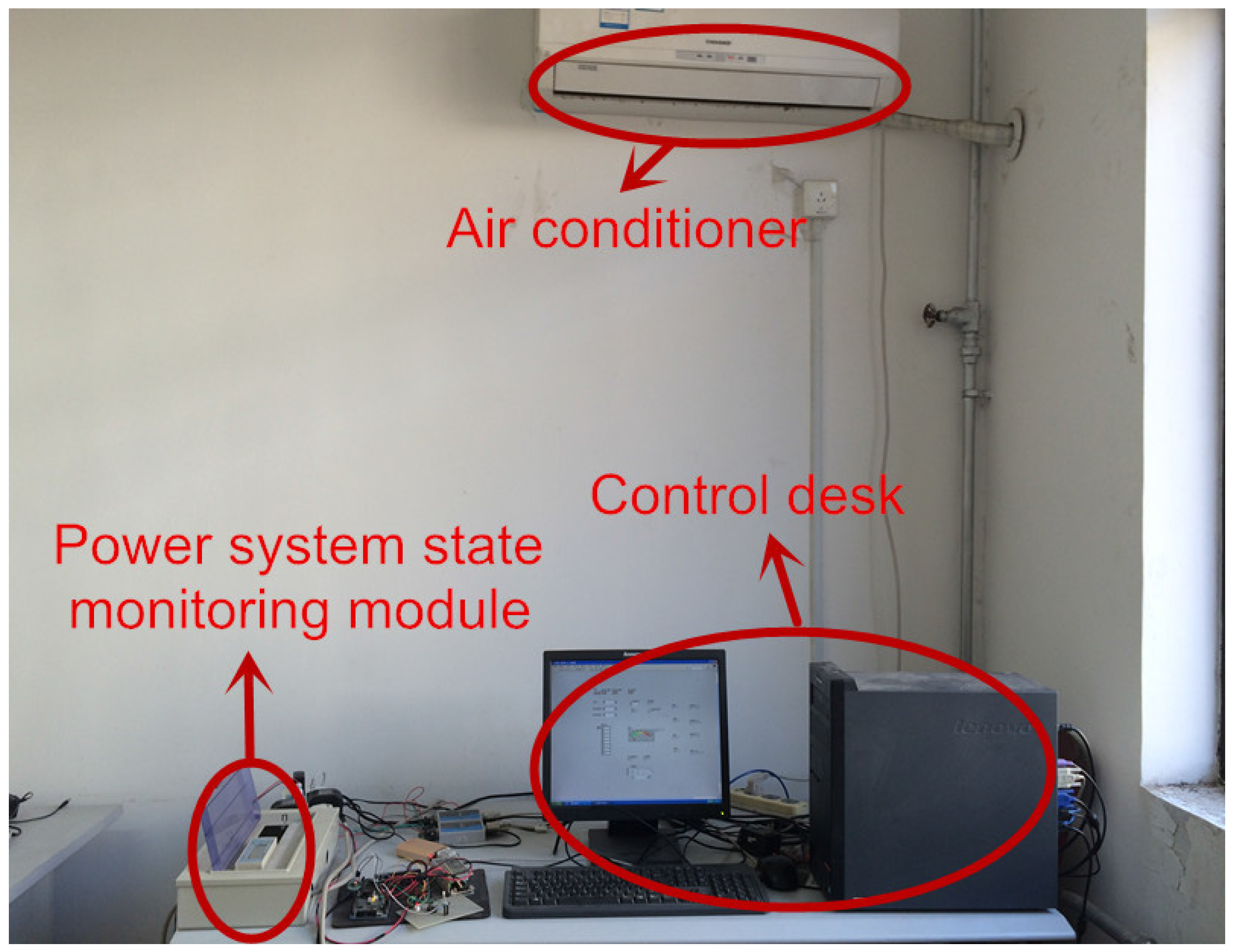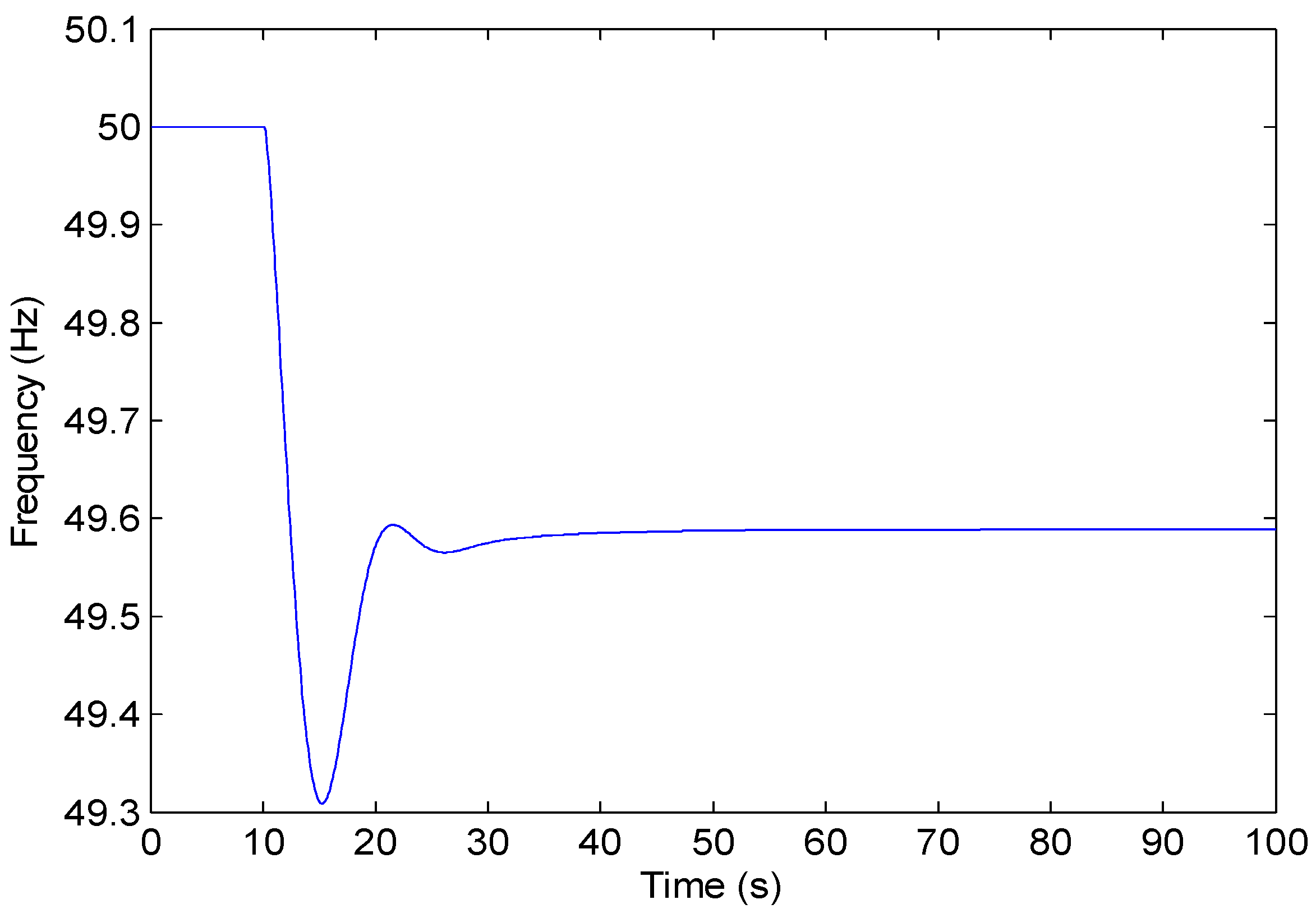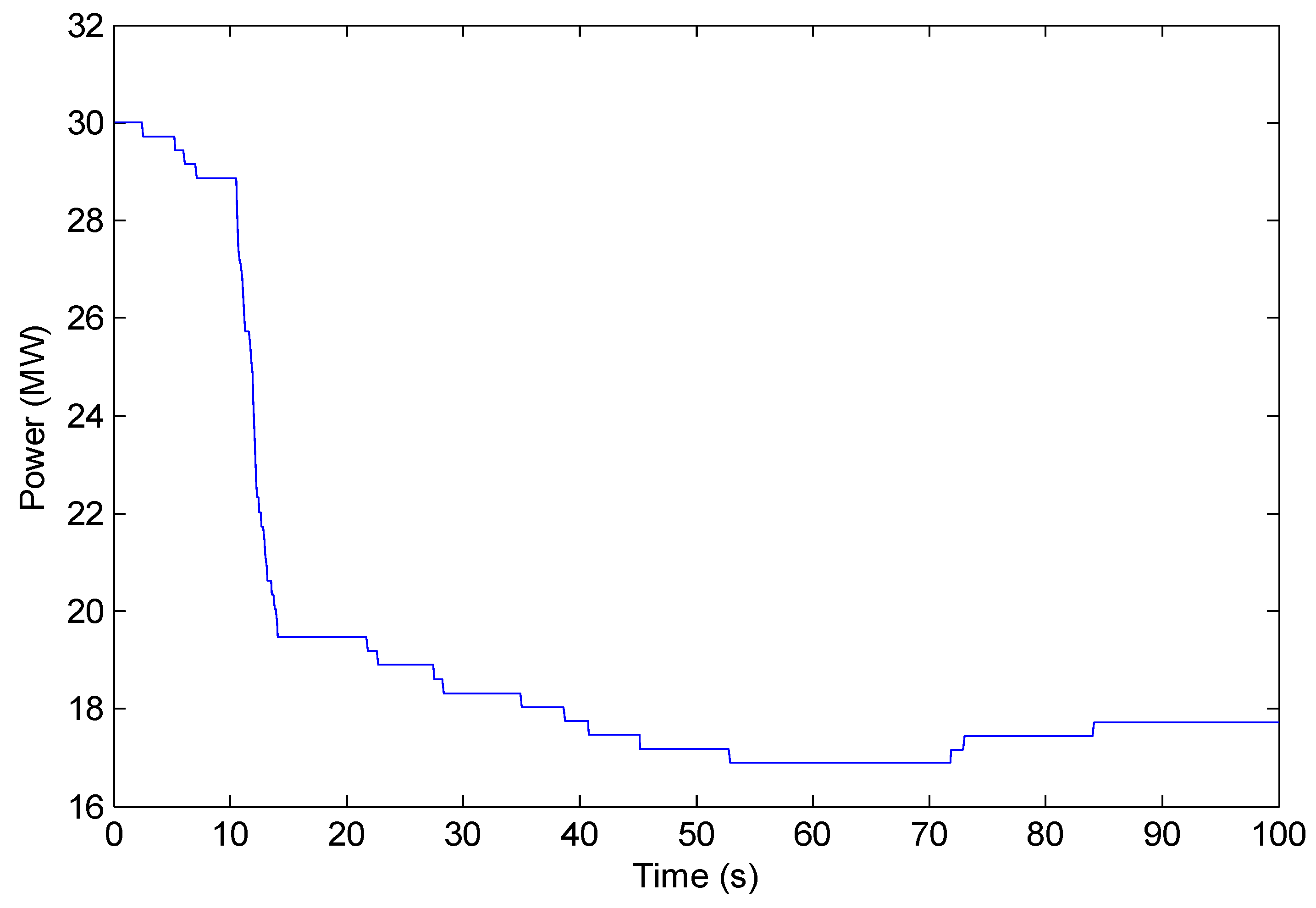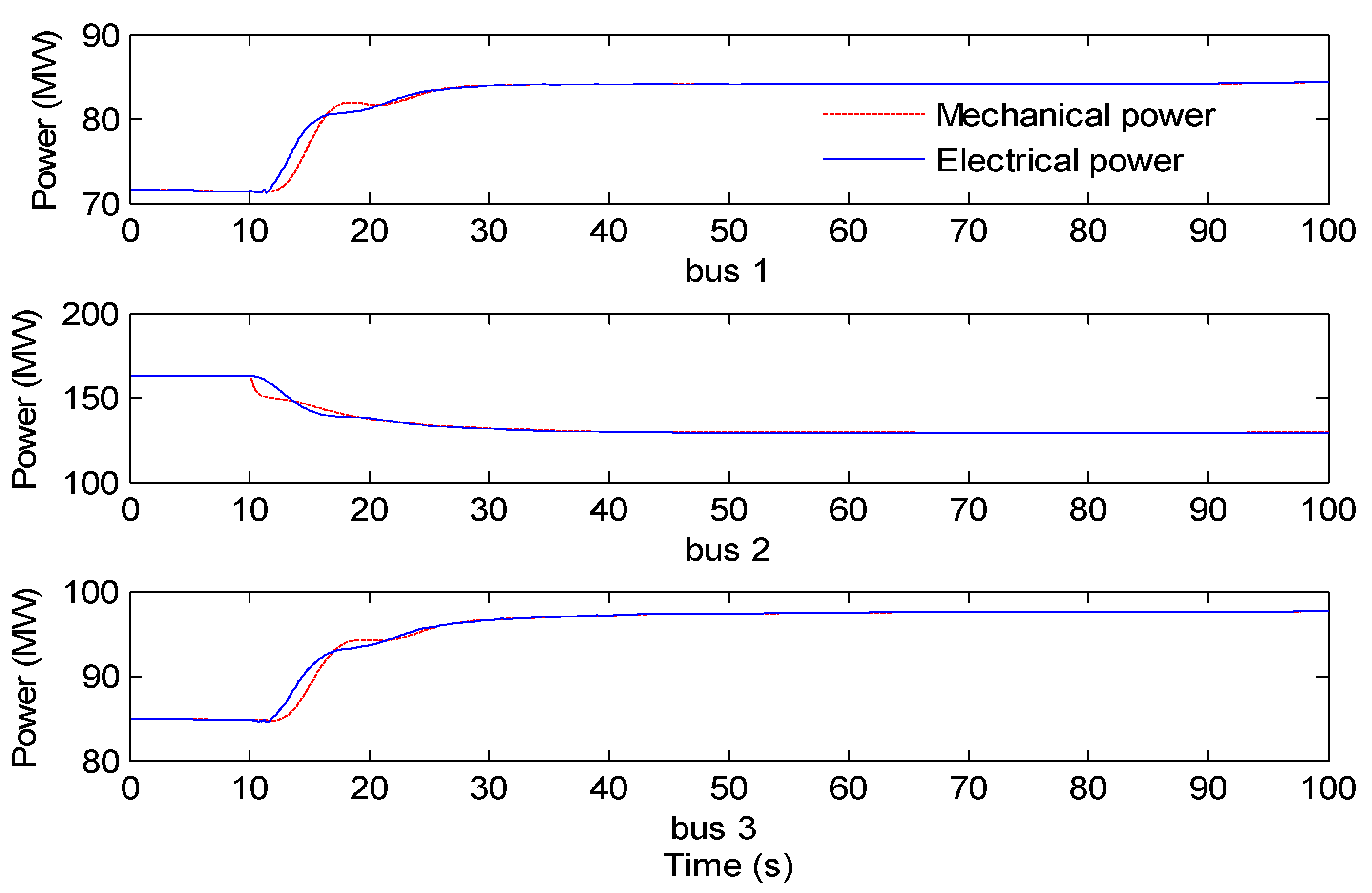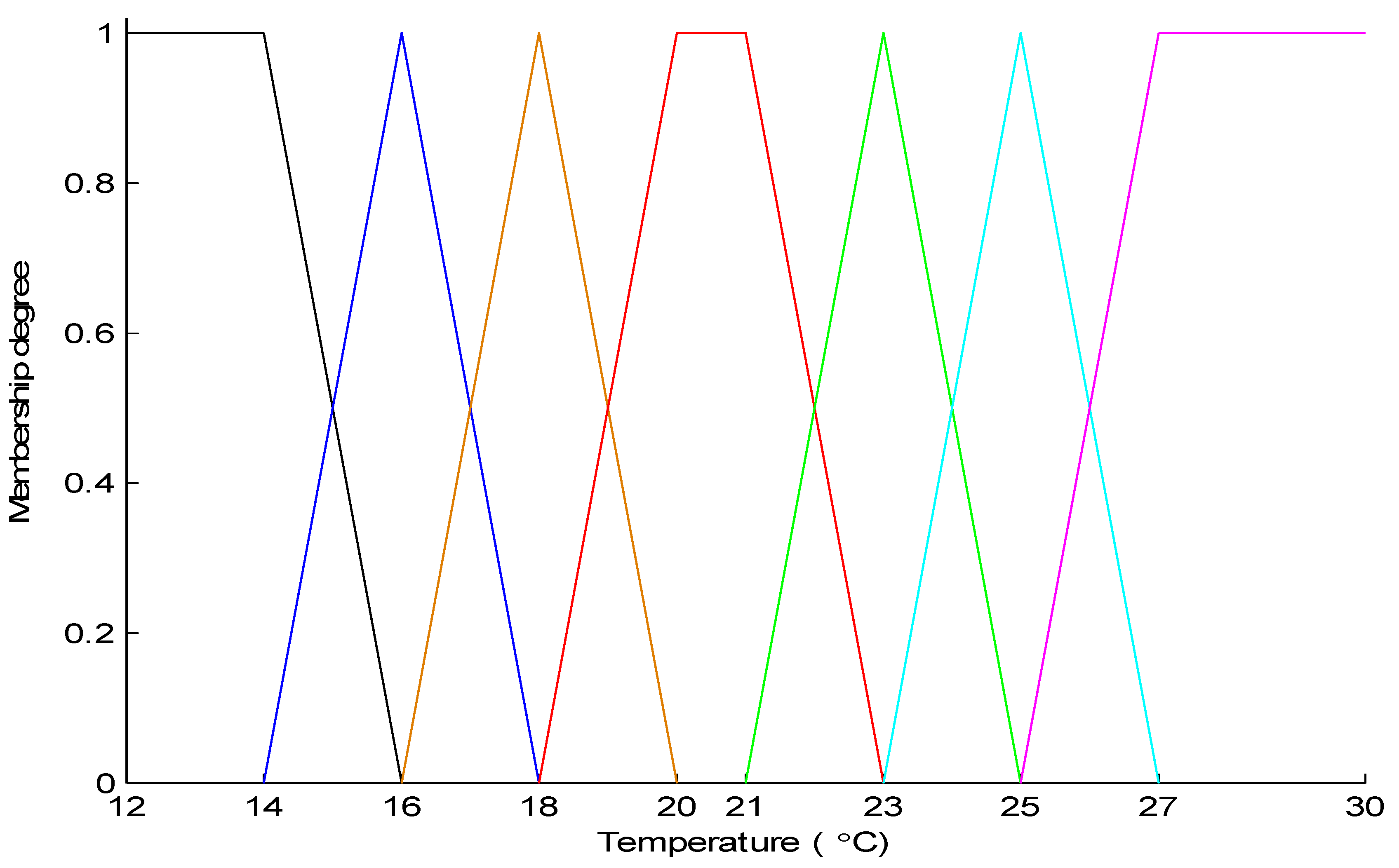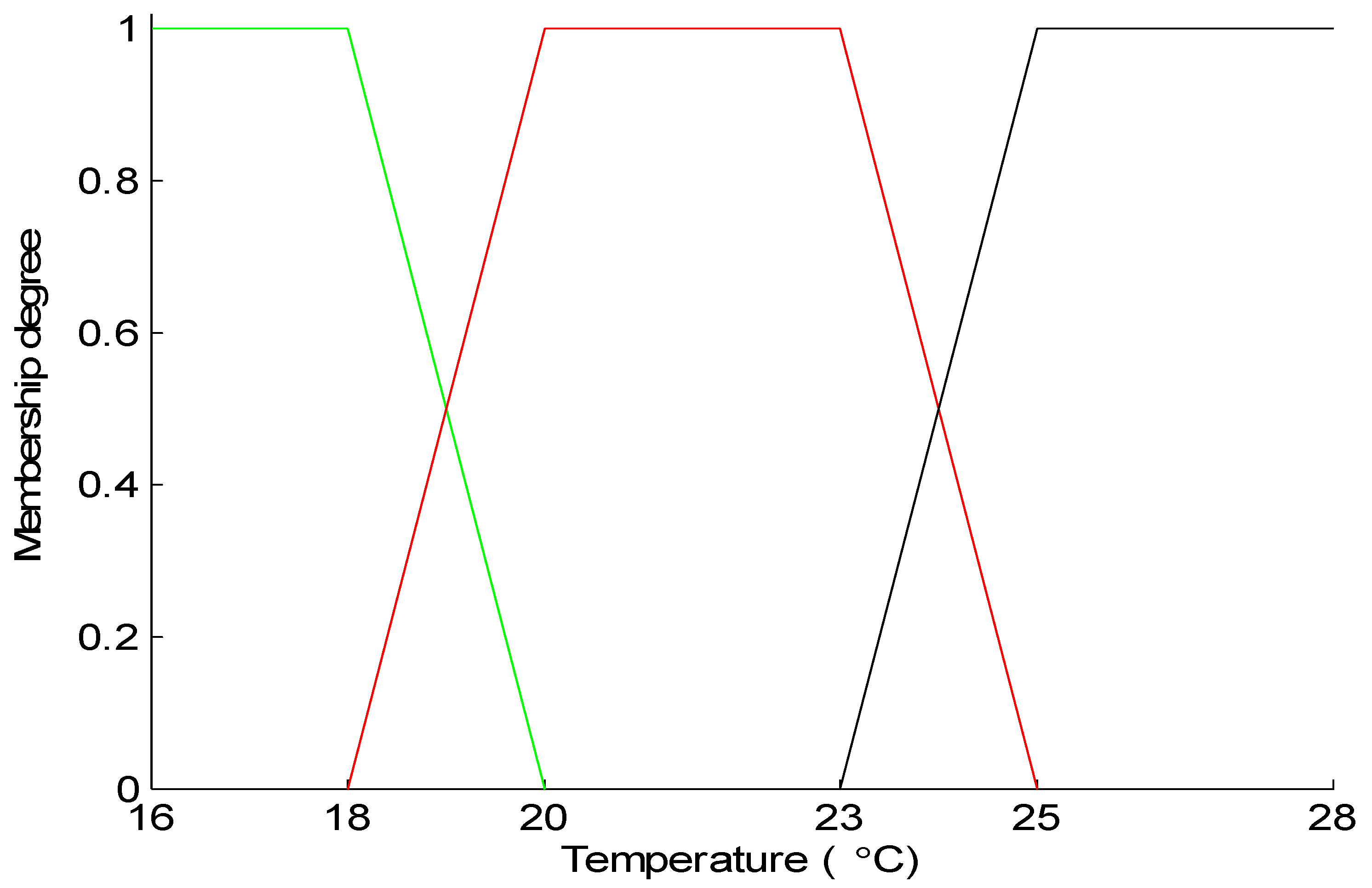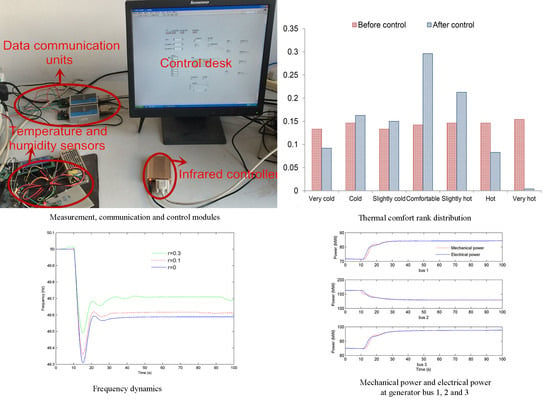1. Introduction
In a power system, real-time balance between generation and load is a fundamental requirement for its stable operations. However, some disturbances, such as a sudden drop of generation or short-circuit faults, will cause the mismatch between the two sides bringing damage to the facilities and instability to the power system [
1]. Power system frequency is an accurate indicator for generation-load balance. The primary frequency control operates at a time-scale of seconds and uses a speed governor to adjust the mechanical power responding to the frequency deviation. The secondary frequency control operates at a time-scale of minutes and regulates the frequency according to the area control error (ACE) [
2]. Traditionally, these two types of control are implemented on the generation side.
Relying solely on the generation side is not sufficient for frequency control. Conventional generating units are of high wear-and-tear cost and low thermal efficiency when responding to control signals in intervals of seconds [
3,
4]. With the environmental cost to be accounted for, reserve provision from generation, especially fossil-fueled generators, will be much more expensive. The large-scale integration of intermittent energy sources [
5,
6,
7], e.g., wind and solar energy, will cause high variety and uncertainty in power outputs because of the stochastic nature of weather conditions [
8,
9,
10]. Supplementary to the generation side, resources from the load side have the potential to provide low cost and fast responsive regulation.
The feasibility and efficiency of load control have been justified [
11,
12,
13,
14]. Direct load control (DLC) is a centralized scheme that is exerted directly by the control center for large-scale industrial loads [
15,
16,
17]. As opposed to DLC, load control through small-scale residential and commercial loads is implemented on disperse end-users [
18,
19]. Thermostatically controlled loads (TCLs), e.g., air conditioners, heat pumps and refrigerators, are good options for primary frequency control because of their inherent heat capacity [
20]. Compared with DLC, decentralized control through TCLs is much more flexible. Moreover, TCLs, especially air conditioners take a large proportion in load portfolio. For instance, in China, the proportion of air conditioners in peak power is almost 30%–40% during summer and grows year by year [
21]. Consequently, air conditioners can take an active role for frequency control [
22].
The fast advancement of smart grid technologies provides a gradually open platform for electricity users. Almost simultaneously, the smart home domain attracts building designers, telecommunication suppliers and appliance manufactures to join in to make home appliances connected and controlled flexibly [
23]. Active participation of residential air conditioners in power system control appropriately interlinks the two smart domains, which can be implemented in an economical way.
The feasibility and effectiveness of air conditioners participating in power system operation have been demonstrated by recent research and field programs [
24,
25,
26,
27,
28,
29]. Studies in [
24,
25] verified the technical feasibility of air conditioners to participate in frequency control, which requires fast response. More and more utility companies carry out demand response programs involving residential air conditioners, e.g., the SmartAC program of Pacific Gas & Electric Company (PG&E) [
26,
27], the energy smart thermostat program by Southern California Edison [
28] and the smart thermostat program at San Diego Gas & Electric Company [
29].
Two mechanisms for air conditioners participating in frequency control are available: (1) directly switch ON/OFF and (2) modulation of temperature setting. In [
14], a primary frequency control strategy by switching ON/OFF of demand-side devices was proposed. A frequency control scheme was demonstrated in [
16] by adjusting temperature set points of air conditioners in high-density residential buildings. Two types of logics were respectively developed in [
19] by directly switching ON/OFF or modulating temperature set points. Compared with the first mechanism, the second one is much more flexible and causes less negative impacts on users’ comfort. Many of the current control designs focus on manipulation of loads in a centralized way by using a general dynamic equation to describe the collective thermodynamics of loads [
19,
20]. The decentralized load control strategies were also studied. A decentralized primary-dual algorithm was proposed for optimal load control in [
4,
30].
For air conditioners, the end-use utility is evaluated mainly by users’ thermal comfort. Various factors may influence human’s thermal feelings, in which temperature and relative humidity take the largest part for indoor users [
31]. In general, humans feel more comfortable when the temperature is between 24 °C and 27 °C, while relative humidity is between 55% and 70% in summer [
32,
33,
34,
35,
36]. Accounting for the user’s thermal comfort, the accurate description of conditioned space is required. First-order, second-order and third-order models were built, respectively, in [
37,
38,
39] to depict thermodynamics of the conditioned space. In [
30], the control strategy accounts for the utility of loads, but it focuses on the group’s characteristic rather than on each individual’s.
Air conditioners can actively respond to power system dynamics. Efforts have been made in the field of dynamics modeling. A single-generator power system model was used in [
4] to test the feasibility and efficiency of load control, which is too simplified and less accurate. A classical multi-generator model was introduced in [
3], which simplifies the network by grouping each generator bus with its nearby load buses. Since load buses are eliminated, the model is not able to accurately depict load characteristics. The structure preserving model is required with load buses retained [
30]. Most of previous studies adopted DC power flow to describe the connectivity between buses, ignoring the influence of voltage characteristics on system dynamics [
3,
4,
18,
19].
In this paper, we propose a strategy to facilitate the active participation of air conditioners. To evaluate users’ thermal comfort, fuzzy mathematics is employed to establish membership functions for various temperature and relative humidity values. The states of air conditioners are described by a third-order model, with its parameters sampled by using the Monte Carlo simulation method. When a disturbance occurs, the temperature set points of air conditioners will be adjusted in response to the degree of frequency deviation while keeping users’ thermal comfort within the appropriate range. A structure preserving model is applied to multi-bus power system, with both generator and load buses retained. Full AC power flow is adopted instead of DC power flow.
The remainder of this paper is organized as follows.
Section 2 proposes a decentralized control law for air conditioners accounting for individual user’s thermal comfort.
Section 3 models power system dynamics with the aggregation of air conditioners integrated.
Section 4 presents results of case studies. Conclusions are drawn in
Section 5.
